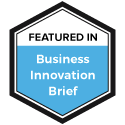
Authenticity Without Empathy: Navigating the Fine Line
Authenticity Without Empathy: Navigating the Fine Line
In the realm of personal development and interpersonal relationships, the concepts of authenticity and empathy often emerge as central pillars.
Authenticity, the art of being true to oneself, and empathy, the capacity to understand and share the feelings of another, are both hailed as virtues in building meaningful connections.
However, when authenticity is devoid of empathy, it can lead to a complex paradox that challenges the fabric of social harmony.
The Essence of Authenticity
At its core, authenticity is about living in alignment with your true self. It involves expressing your thoughts, beliefs, and emotions genuinely, without succumbing to societal pressures or the expectations of others. Authentic individuals are seen as trustworthy and reliable, as their external behaviors reflect their internal states.
The Role of Empathy
Empathy, on the other hand, is the emotional bridge that connects individuals. It allows us to step into the shoes of others, to understand their perspectives and feelings, even if they differ from our own. Empathy fosters tolerance, compassion, and understanding, serving as a crucial element in the maintenance of healthy relationships.
The Conundrum of Authenticity Without Empathy
The pursuit of authenticity without empathy presents a conundrum. While being true to oneself is important, an overly rigid adherence to one’s own perspectives, without considering the feelings and viewpoints of others, can lead to discord.
Authenticity without empathy can manifest as bluntness, insensitivity, or even unintentional cruelty, eroding the foundation of mutual respect and understanding that underpins healthy social interactions.
Potential Pitfalls
- Misunderstandings and Conflicts: A lack of empathy in authentic expressions can lead to misunderstandings and conflicts, as individuals may feel disregarded or disrespected.
- Isolation: Over time, an authentic but unempathetic approach can lead to social isolation, as others may withdraw from interactions that consistently lack sensitivity.
- Hindered Personal Growth: Without the reflective mirror of empathy, authentic individuals might miss out on opportunities for personal growth and self-improvement, as they may be less likely to consider alternative viewpoints or recognize the impact of their actions on others.
Striking a Balance
The challenge, then, is to strike a balance between authenticity and empathy. This involves:
- Mindful Expression: Being mindful of how one’s authentic expressions might be received, adjusting the delivery to account for the listener’s feelings and perspectives.
- Active Listening: Practicing active listening to truly understand where others are coming from, which can inform a more empathetic approach to authentic interactions.
- Emotional Intelligence: Cultivating emotional intelligence to better navigate the complex interplay between being true to oneself and being considerate of others.
Conclusion
Authenticity without empathy can lead to a narrow path where genuine self-expression comes at the expense of meaningful connections. In the journey toward personal and interpersonal growth, it is imperative to weave empathy into the fabric of authenticity, ensuring that our truest selves are not just understood, but also compassionate.
By embracing both virtues, we can foster relationships that are not only honest but also deeply connected and mutually enriching.










Recent Comments